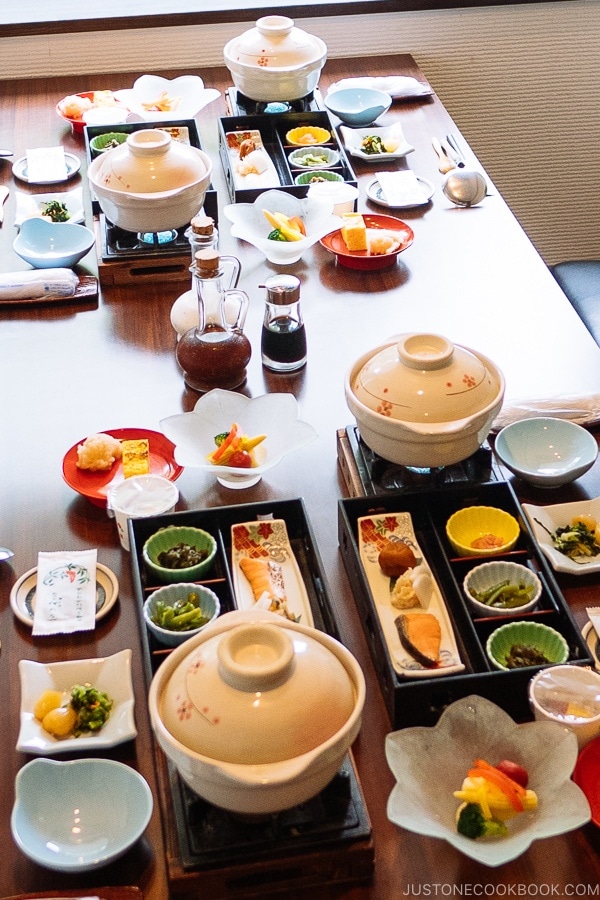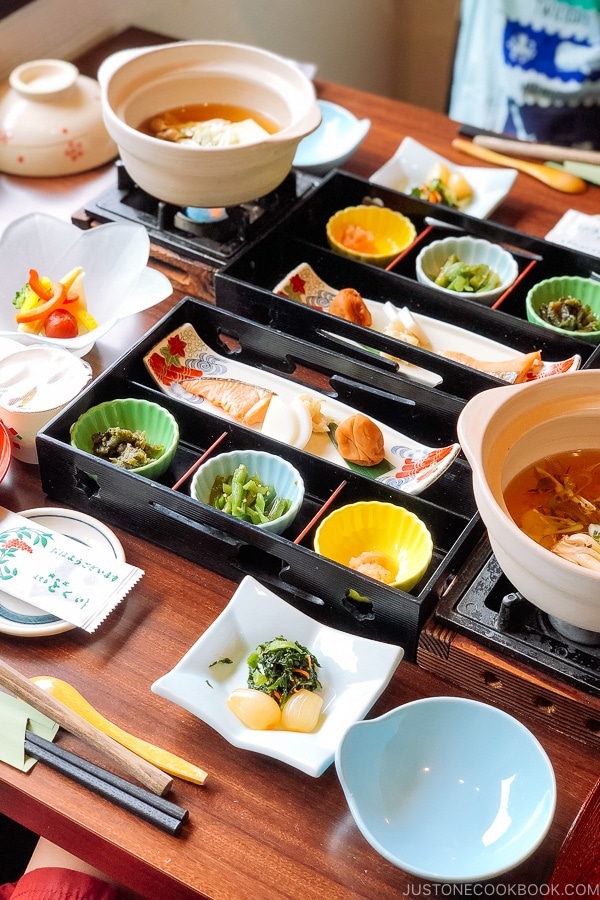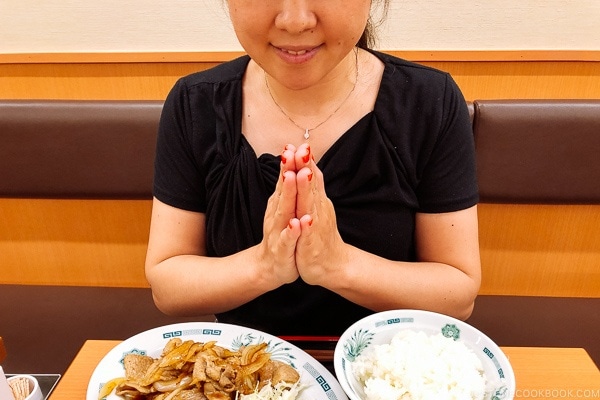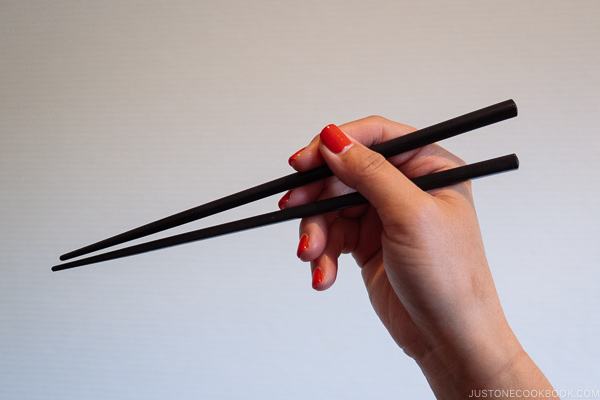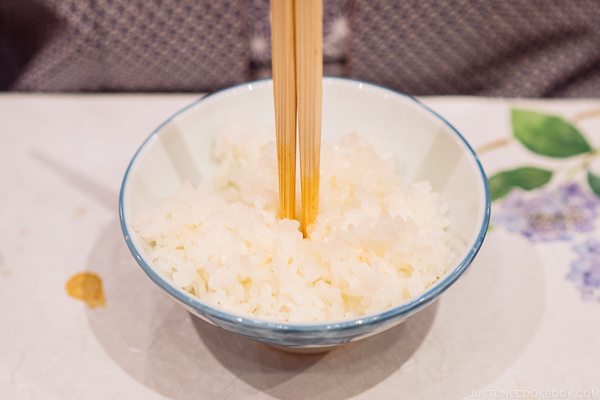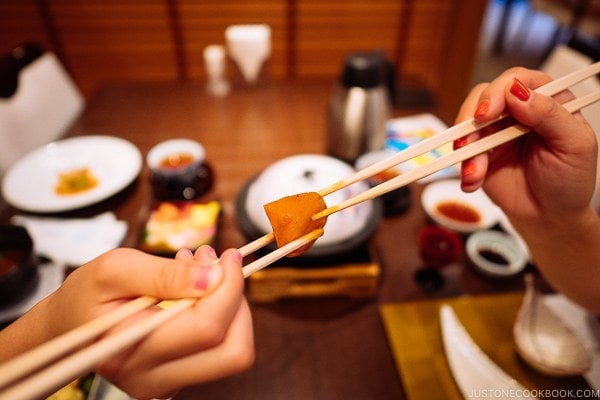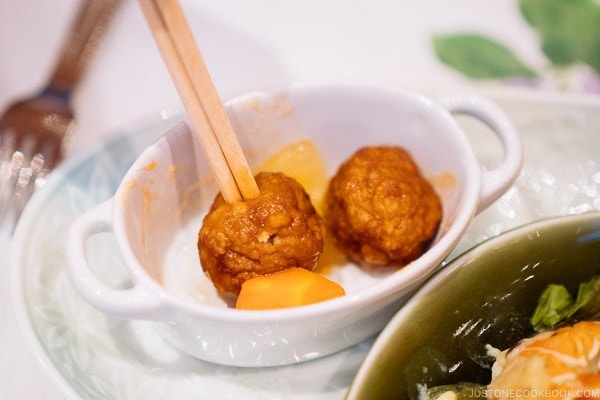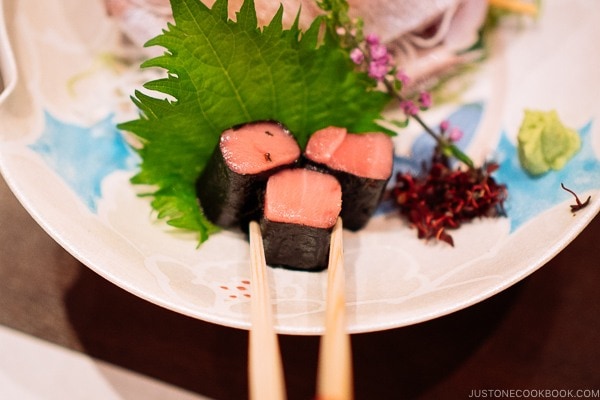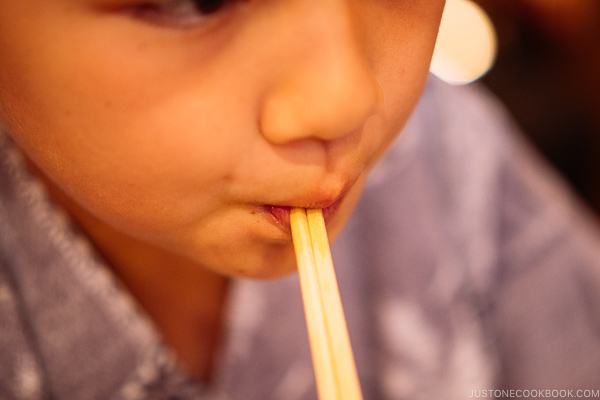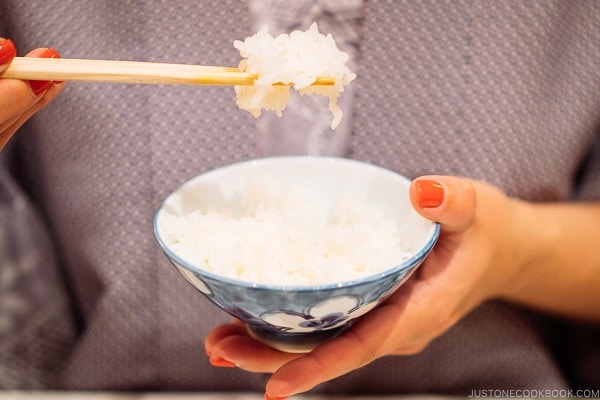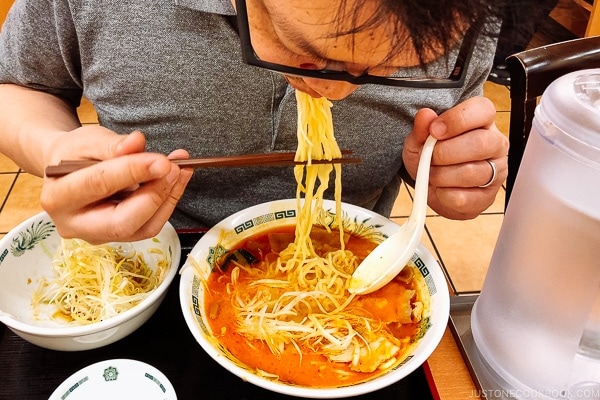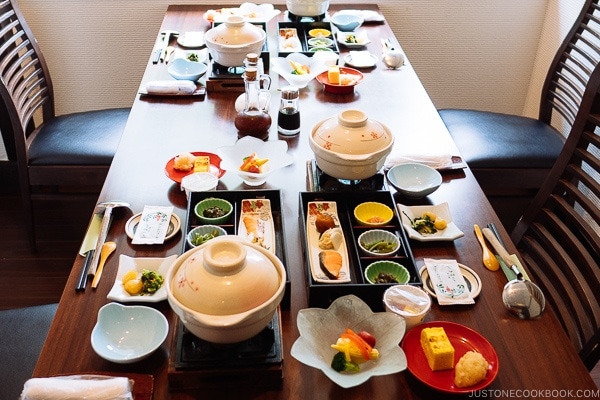Imagine walking into a Japanese restaurant, perhaps with a few Japanese friends or colleagues. The menu is handed to you, all in Japanese. Your friends hungrily ordered dishes to share, quickly served on steaming hot plates covering the table. You pick up your chopsticks to dig in, and then…? In mid-action, you notice from the corner of your eye that your new Japanese friends put their hands together, murmur a phrase with a slight bow, and then, with a smile, split their chopsticks apart to partake in the meal. Oops!? Have you offended your Japanese friends?! Etiquette rules, especially when dining, are tricky. Eating with others in Japan can be an awkward experience if you’re unaware of the many cultural differences. While you can always play the “I am an outsider to your culture, so please excuse me” card (AKA, the gaijin foreigner card), who doesn’t want to navigate Japanese social norms smoothly without raising eyebrows? After all, who wants to show bad manners to their host or fellow diners? Let’s get started with an essential guide to Japanese dining etiquette.
Japanese Dining Etiquette Guide
Saying Thanks Before and After Your Meal
So what was that quick but ceremonious greeting before the meal? You may have noticed the JOC kids saying Itadakimasu いただきます at the end of each JOC video when the meal is ready to eat. Roughly translating to “I humbly partake/receive,” it is similar to saying grace at the beginning of the meal. When you finish your meal, gently place your chopsticks on the rice bowl or chopsticks rest, and conclude with Gochisousamadeshita ごちそうさまでした, which means ‘thank you for the delicious meal’ or ‘it was quite a meal.’ Let’s practice again: Before you eat, say ‘ Itadakimasu’; at the end of the meal, say ‘Gochisou samadeshita’. Well done! These greetings during mealtime are deeply rooted in Buddhism and Shintoism, the two main religions of Japan. Saying Itadakimasu and Gochisou samadeshita is the Japanese way of expressing gratitude for nature’s bounty and to the many people who have participated in providing the meal, including the cook, fishermen, farmers, butchers, supermarket employees, truck drivers, and so on. This ritual in Japan acknowledges the beings (animals and plants) sacrificed and the people who helped create the delicious food before you. Therefore, completing the meal without leftovers or grains of rice in your bowl is even more important than the open and concluding sayings at mealtimes. Finishing the meal shows the utmost respect to the cook and others who have contributed to the meal. If it’s impossible to finish, it is best to shift all the leftover food to the side of your plate or bowl with your chopsticks.
Five Basic Chopstick Etiquettes to Remember
The main utensils in Japan are chopsticks (お箸). While spoons have snuck into modern-day Japanese cuisine, the tradition calls for just chopsticks, which have been used since the 8th century. There are endless sources that explain how to hold chopsticks properly, so I’ll skip that for this post, but check out this image if you need some brushing up. It’s easier to explain chopstick etiquette with the “don’ts” than the “do’s.” Many don’ts are due to Buddhist funeral rituals or are said to bring bad luck, and thus do not belong at the dining table.
1. Do not stick your chopsticks into food, especially into your bowl of rice. (立て箸)
When not using your chopsticks, lay them on the chopsticks rest, or if you’re done with your meal, horizontally on a bowl or plate (never vertically).
2. Do not pass food to another person’s chopsticks with your own. (拾い箸)
If you must transfer food to another person, put it directly on his/her plate or bowl.
3. Do not spear your food. (指し箸)
Chopsticks are meant to be used together like tongs, so pick up the food even if it’s tricky. If you’re concerned that you may drop it, lift the plate or bowl close to your face instead.
4. Do not use your chopsticks to pick up food from a communal plate.
If communal chopsticks are provided, use that instead or flip your chopsticks to use the opposite ends. However, if you are in a relaxed setting with family or close friends, it may be acceptable to use your chopsticks. When in doubt, watch to see what others do.
5. Do not lick or chew on your chopsticks. (ねぶり箸)
Chopsticks are a tool to transfer food from your plate to your mouth. It may be tempting if bits of food are stuck on your chopsticks, but if you must insist, wipe with a tissue/napkin instead.
Lifting Plates and Bowls
Your parents or teachers may have taught you not to lift bowls or plates close to your face when eating, but this is acceptable in Japanese culture. Western table settings utilize tables and chairs, where the chair’s height situates the eater not too far from the plate in front. In contrast, a traditional Japanese meal is eaten on a low table, and seating is close to the ground, hence a farther distance from the table to the face. Even when Japanese restaurants have adapted to the Western table setting, lifting plates and bowls close to you is still acceptable. This will especially be needed when you’re about to eat something soupy or drippy, which may splatter on your shirt or table (or your neighbor’s!)
Okay to Lift:
Rice bowls Soup bowls, small deep bowls with liquids Small plate of soy sauce for sashimi or sushi Donburi bowls (with rice or noodles such as ramen or udon) or lacquer rice box (ojyubako))
Do Not Lift:
Sashimi plates Tempura plates Communal plates/bowls Plates/bowls bigger than the palm of your hand (excluding bowls/plates that have rice, like donburi bowls and lacquer rice box (ojyubako)).
Slurping
Your parents may have taught you not to slurp your noodles. However, it’s perfectly acceptable to slurp away your udon, soba, and ramen when you’re in Japan! Japanese noodle aficionados will insist that slurping improves the flavor of the noodles, that it helps cool the noodles, or that your nasal passages take in the delicious aromas of the broth. While it’s not mandatory, you may get a nod of appreciation from your Japanese neighbor as you slurp your meal. Note: the term Nu-hara ヌルハラ (noodle harassment) has been circulating by the Japanese media for a few years due to some Japanese diners irked by the slurping noises. Personally, my advice is: don’t worry about it. Indulge in your meal with noise and gusto!!
Your Experience with Japanese Dining Etiquette
If you unintentionally commit a faux pas when eating in Japan or with Japanese friends, don’t panic! But knowing these Japanese etiquette rules will go a long way, and your friends will respect you for taking the time to understand their culture. And, of course, for being a good guest! Some of you had great questions for this post, and I answered them in Japanese Dining Etiquette Part 2. Lastly, what Japanese dining etiquette tips have you learned that weren’t mentioned in this post? Or do you have any horrifying stories when dining in Japan? Please share in the comment box below!
Helpful Links
Japanese grocery stores around the world Japanese restaurants around the world
Similar Posts:
Plan a Japanese Meal: One Soup Three Dishes “Ichiju Sansai” Decoding Japanese Food Emojis Onsen Etiquette: Your Guide to Japanese Hot Springs
